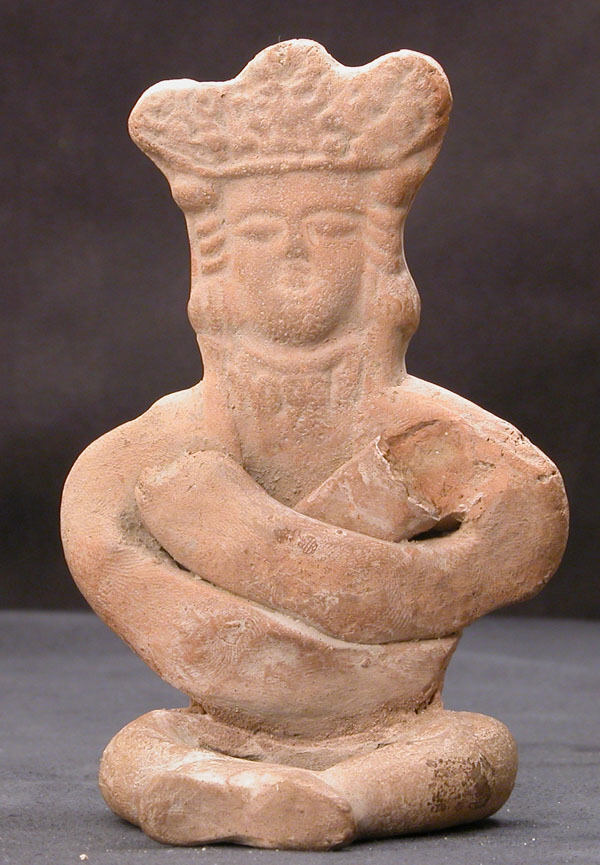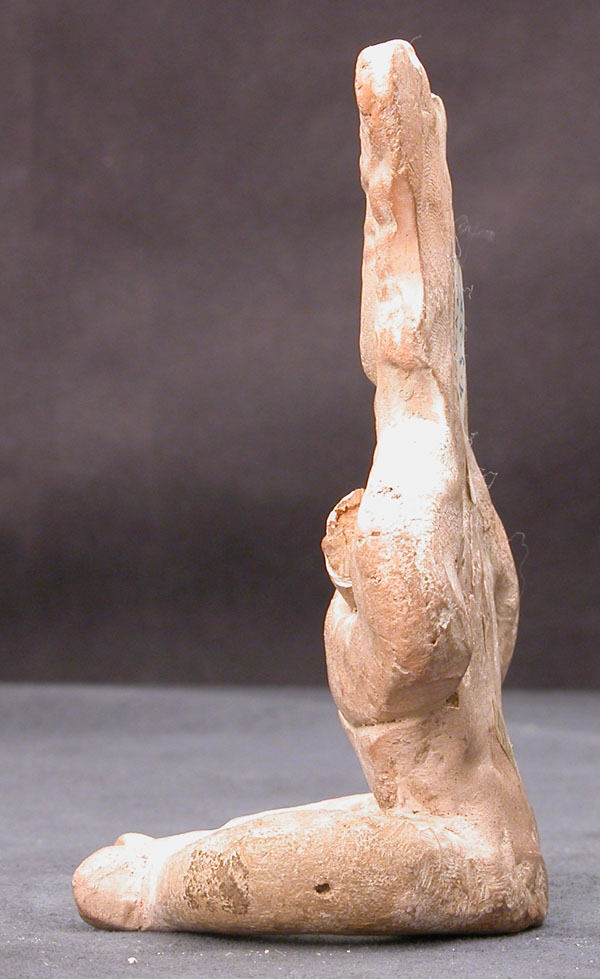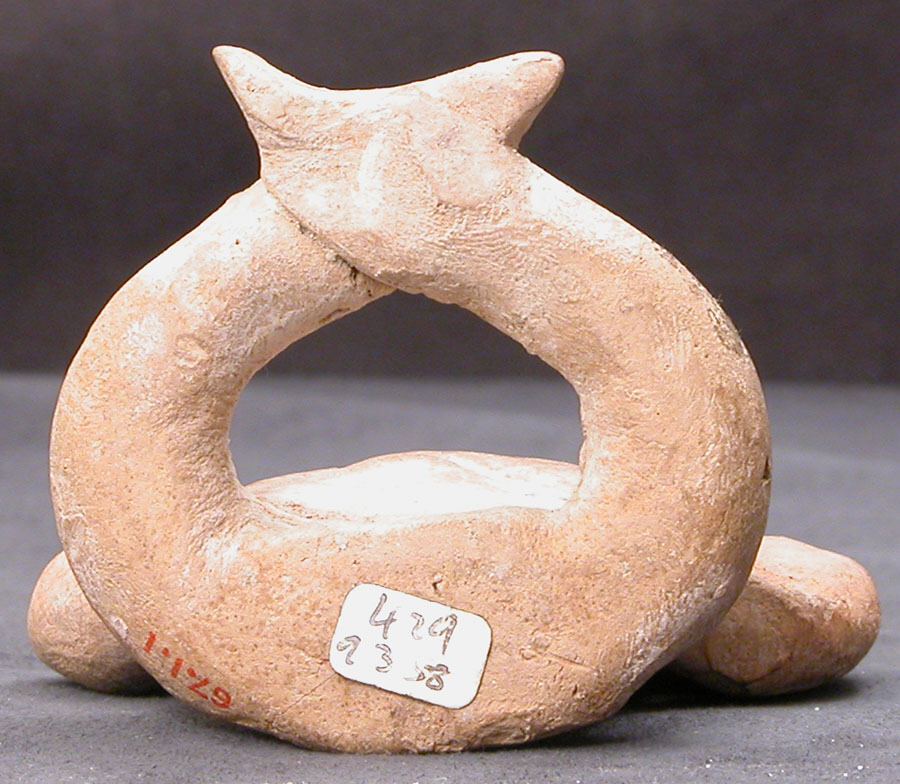Figurine of a Seated Personage with Folded Arms and Elaborate Headdress
This figurine shows a cross-seated personage with an elaborate headdress and jewelry, including perhaps earrings (or tresses?) and a necklace with pendants. It is unclear what the folded arms indicate, although similar specimens hold a doll or baby. The back of the figurine is completely plain, and rather flat, while the bottom still shows traces of the potter’s fingerprints.
The figurine belongs to a group of similar objects excavated at several sites, including Susa and Gurgan, in Iran, and Wasit, in modern Iraq. They are made of molded earthenware and are unglazed, and sometimes show the addition of modeled parts, such as the arms and the legs of this figurine. Scholars have suggested that they may have functioned as toys for children, decorative objects, gifts for festive occasions, or even decorative elements for buildings. At Wasit about four hundred such figurines were found together in a pottery workshop, which speaks to their fabrication in large numbers and their accessibility far beyond an elite group of customers.
Musicians are widely represented, some playing flutes, others beating drums. Some figurines hold a jug and a round basin that may have been used to serve food and drink or to wash guests’ hands. Others are depicted with both hands raised, most likely to indicate dancing. Several figurines are shown holding a small doll or baby. Many figurines, as this one, wear heavily ornamented headdresses, a seeming anomaly that is explained by their prevalent engagement in convivial activities.
Due to rights restrictions, this image cannot be enlarged, viewed at full screen, or downloaded.
This artwork is meant to be viewed from right to left. Scroll left to view more.





